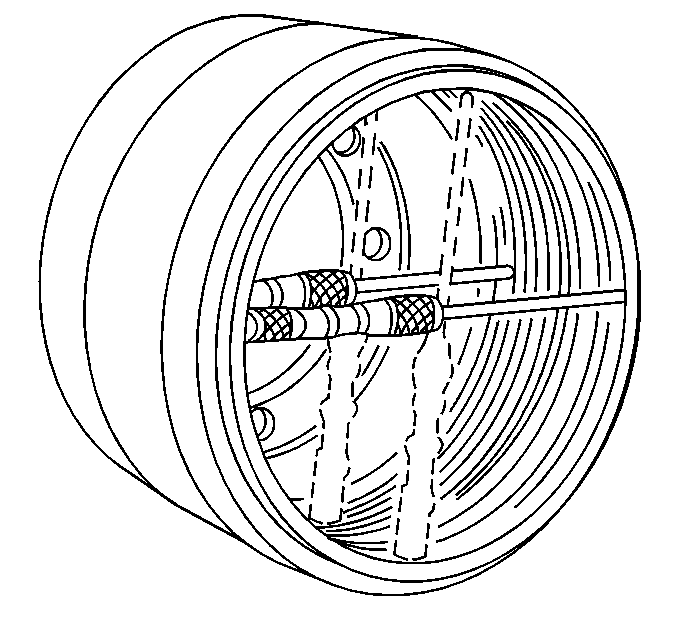Cracked, Scored, or Grooved
A cracked brake drum is unsafe for further service and must be replaced.
Do not attempt to weld a cracked brake drum. Smooth up any slight scores.
Heavy or extensive scoring will cause excessive brake lining wear. Replace
the brake drum if any of these conditions are present.
Out-of-Round or Tapered Brake Drum
An out-of-round or tapered brake drum can cause the following circumstances:
| • | A violation of the acuracy brake shoes adjustment |
| • | An excessive wear of the other wear due to its eccentric action |
| • | A severe and irregular wear of the tire tread |
| • | A pulsation of the brake pedal |
A brake drum out-of-round and taper can be accurately measured with
an inside micrometer and extension rods. Replace the brake drum when the
brake drum exceeds the specification limits for taper and/or out-of-round.
Inside Diameter Check
The following checks should be done when major service is required.

- Measure the braking surface for maximum allowable diameter.
| • | Fading or overheating brakes can be caused by an oversized brake
drum. |
| • | Measure the brake drum diameters at four equally-spaced points
near the middle of the braking surface. |
| • | Replace the brake drum if any diameter is at or more than the
maximum discard diameter stamped into the brake drum. |
- Measure the braking surface for out-of-round.
| • | Chatter at the wheels can be caused by out-of-round brake drums. |
| • | Measure the brake drum diameters at four equally-spaced points
near the middle of the braking surface. |
| • | Replace the brake drum if any diameter readings are more than
0.38 mm (0.015 in) apart. |
Taper Check
Measuring the brake drum for taper involves taking measurements at the
inner and the outer edges of the machined surface at four or more places around
the brake drum.
| • | The brake linings will wear unevenly if the brake drum is tapered
or barrel shaped. |
| • | Measure the brake drum diameters at four equally-spaced points
near the top of the braking surface. The four measurements should be averaged
to obtain an average diameter near the top of the braking surface. |
| • | Measure and average four diameters at the middle of the braking
surface. |
| • | Measure and average four diameters at the bottom of the braking
surface. |
| • | Compare the four average diameters to determine if the brake drum
is tapered or barrel shaped. |
| • | Replace the brake drum if any of the average diameters are more
than 0.25 mm (0.010 in) apart. |
Balance
Weights are used to balance the brake drums during manufacturing. Do
not remove the weights. Replace the brake drum if the weights are shown to
be missing.

